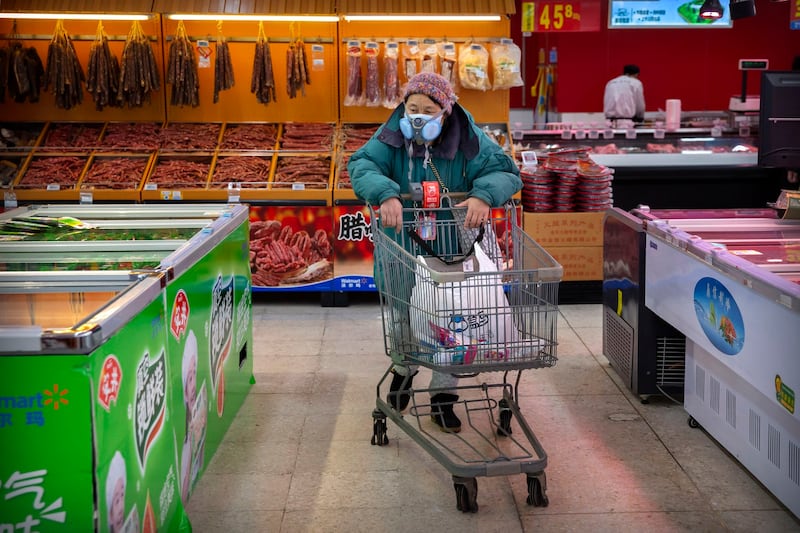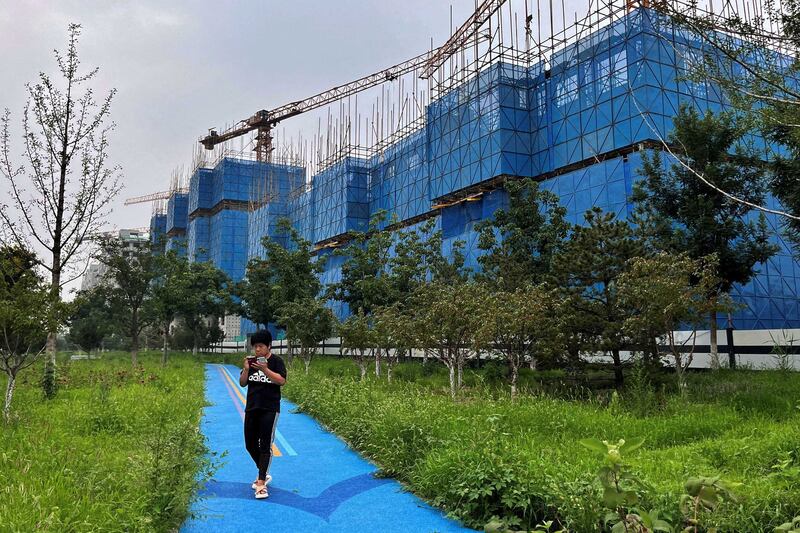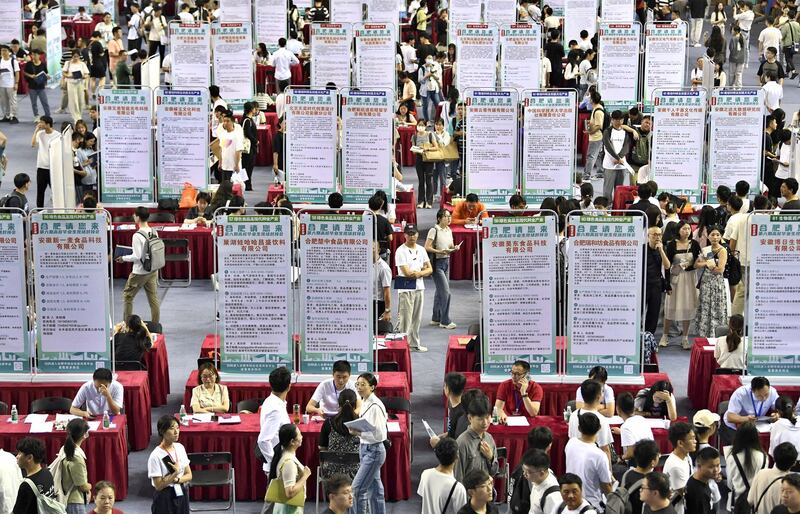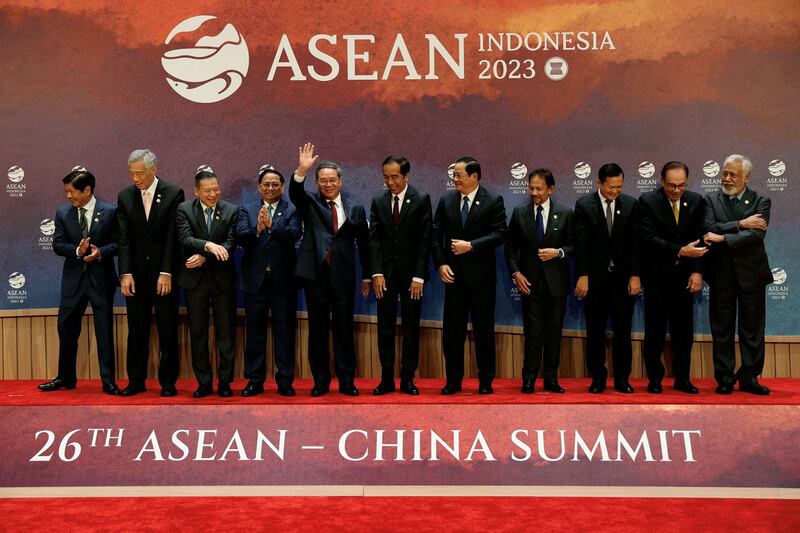Concerns over China’s real-estate sector have grown to anxiety over the country’s overall economic health and the viability of its investment-led development model. Nowhere have those concerns reverberated more than in Southeast Asia.
As China's economy struggles for multiple, interconnected reasons – largely the result of government policies and paramount leader Xi Jinping's predilection for control – Southeast Asian countries are facing knock-on effects on trade, investment and lending after three decades of being lifted up by Chinese growth.
China faces a thorny knot of economic problems at the same time.
First, the post-pandemic economic consumption recovery didn't happen. People feel insecure about the economy, rising unemployment, or the potential of future lockdowns, possibly causing a period of prolonged deflation. Domestic consumption accounts for just 38% of GDP.

Second, exports have fallen sharply. August saw year-on-year exports down 8.8%, though an improvement from July, which saw a year-on-year 14.5% decline in exports. Exports to the U.S. and EU were down by 17.4% and 10.5%, respectively.
Third, portfolio investment is fleeing the country – over $3.4 billion in the first two weeks of August alone. But foreign direct investment is still coming in.
Western and Japanese corporations are also actively diversifying their supply chains to India, Vietnam, and other emerging markets. HP just announced the relocation of a PC line to Thailand and Vietnam, while Apple has moved some production lines to Vietnam and India.
Crackdowns hurt sentiment
China's arrest of due diligence investigators from Mintz and Bain, coupled with a new intelligence law and arrests of foreign executives, have become another deterrent to foreign investors.
This crackdown came on top of Xi’s having strangled the most innovative parts of the economy, the tech sector in general, and FinTech in particular, in order to wrest control.
Another source of trouble is China's labor costs, which continue to climb as the population shrinks. And yet youth unemployment was above 20% before the government stopped publishing that statistic in August. Wages continue to rise relative to China's competitors.

Closely related to the real estate crisis is debt: China is awash in debt, with public debt at 267% of GDP. Local government finance units are shouldering over $9 trillion in debt – half of China’s GDP. And the economic slowdown and decline in real estate values and demand will make debt servicing much harder, especially in the hinterland. Real estate sales account for roughly one-third of local government revenue.
A default at Evergrande and near default at Country Gardens, and those at dozens of other overly-leveraged and indebted developers, could cause a cascade. Country Gardens posted losses of $6.7 billion in the first half of 2023, and has roughly $190 billion in outstanding debt. Non-performing real estate loans at the 32 largest banks climbed by 44% year on year according to Nikkei.
Finally, China’s long term strategy of investment led growth has hit a wall. The enormous debt loads that it’s taken out to pay for roads or high speed railways are no longer delivering economic growth. Its railways alone have almost $1 trillion in debt.
China is still an $18 trillion economy that is growing at 3%, but the era of slow growth has arrived.
For 30 years, China’s economy has pulled Southeast Asia. But for the first time, China’s performance will lag behind many of its neighbors. So, what does the end of the era of high growth in China mean for Southeast Asia?
Commodities, tourism to suffer
First, trade will suffer. China is the largest trading partner of every country in the region. Bilateral trade between China and ASEAN grew by 50%, from $641.5 billion in 2019 to $975.3 billion in 2022. Trade in the first six months of 2023 fell by 1.5% year-on-year to $447.3 billion.
Certainly exports of raw materials to China will decline. This will hit Indonesia the hardest. In 2021, it exported $54 billion in goods to China, almost all of which were natural resources. But other states in the region may see commodity prices fall due to diminished demand.
Countries like Vietnam, which are part of the southern China manufacturing supply chain, will also see their exports hit.

Chinese foreign investment in the region will be mixed, depending on the sector.
Chinese corporations need to diversify their markets and search for better returns as their economy slows. China’s high-tech sector, which is unable or unwilling to make some big investments at home right now, is continuing to invest in Southeast Asia.
As a recent report on China's AI investment in Southeast Asia by Georgetown's Center for Security and Emerging Technology notes Alibaba, Tencent and Huawei have built more data centers in the region than their U.S. competitors, and are increasingly investing in local R&D centers. TenCent is a major investor in the Vietnamese tech firm VNG, one of the country's four "unicorns", and the largest locally-owned cloud service.
On the sidelines of a recent ASEAN summit, semiconductor producer Tsinghua Unigroup, which already has manufacturing facilities in Singapore, Malaysia, and Indonesia, announced an expansion of production and R&D in Southeast Asia.
Unavoidable spillover
China will continue to try to maintain its regional economic leadership, in the absence of the U.S., which yielded influence to China when Washington pulled out of the Trans-Pacific Partnership (TPP) trade and investment scheme in early 2017.
China is pushing for the full implementation of Regional Comprehensive Economic Partnership (RCEP), which includes all 10 members of ASEAN. RCEP is in negotiations with ASEAN about an FTA to cover a market of 2 billion people. The U.S.-driven Indo-Pacific Economic Framework for Prosperity (IPEF) is an insufficient substitute for the ill-fated TPP and comes up short as a counter to RCEP.
Many Chinese firms will continue to invest in Southeast Asia in order to circumvent U.S. or EU sanctions and restrictions on investment. Moreover, as western restrictions on high technology continue to box China in, the firms will see what they can acquire in Southeast Asia through mergers and acquisitions.
China will continue to try to dominate certain sectors, in particular electric vehicles. BYD is building a $1.44 billion assembly line in Thailand and announced another in Vietnam to compete with VinFast. China will continue to make strategic investments in Southeast Asia where many of the commodities needed for electric vehicle production, such as nickel and rare-earths, are located.

Nevertheless, the spillover from China’s indebted property sector will be felt in the region.
Chinese property developers across Southeast Asia have been hit hard, and there is considerable anger in Malaysia about unfinished buildings, mortgage payments, and incomplete developments. Country Gardens' $100 billion Forest City project in Johor, according to Nikkei only 15% complete, with property values plummeting, is a reminder that China has exported its debt-laden real estate development model, as well as its bubble.
Massive amounts of capital flight from China will continue. The number of Chinese family foundation offices in Singapore jumped from 400 in 2021 to 1,500 by the end of 2022. With a $1.8 million investment, people can apply for permanent residency in Singapore. And Chinese who used to park their money in Hong Kong are increasingly trying to put it beyond the reach of Beijing. This has led to the surge in real estate being purchased by Chinese in Singapore, and to a lesser extent, in Malaysia and Thailand.
While China’s slowdown may be looked upon as a mixed blessing in the west, in Southeast Asia, there is far greater concern about declining trade, potentially declining investments, and less infrastructure lending and development assistance. The region will likely see a net decrease in Chinese tourists.
Multilateral economic institutions and large commercial banks have down-graded GDP growth in 2023 in Thailand, Singapore, Philippines, and Vietnam, in part, citing China’s slowdown.
The rising China of recent decades may have been a bully, but it was predictable and good for growth. A declining China is anything but, and that makes business and political elites in the region very nervous.
Zachary Abuza is a professor at the National War College in Washington and an adjunct at Georgetown University. The views expressed here are his own and do not reflect the position of the U.S. Department of Defense, the National War College, Georgetown University or Radio Free Asia.
